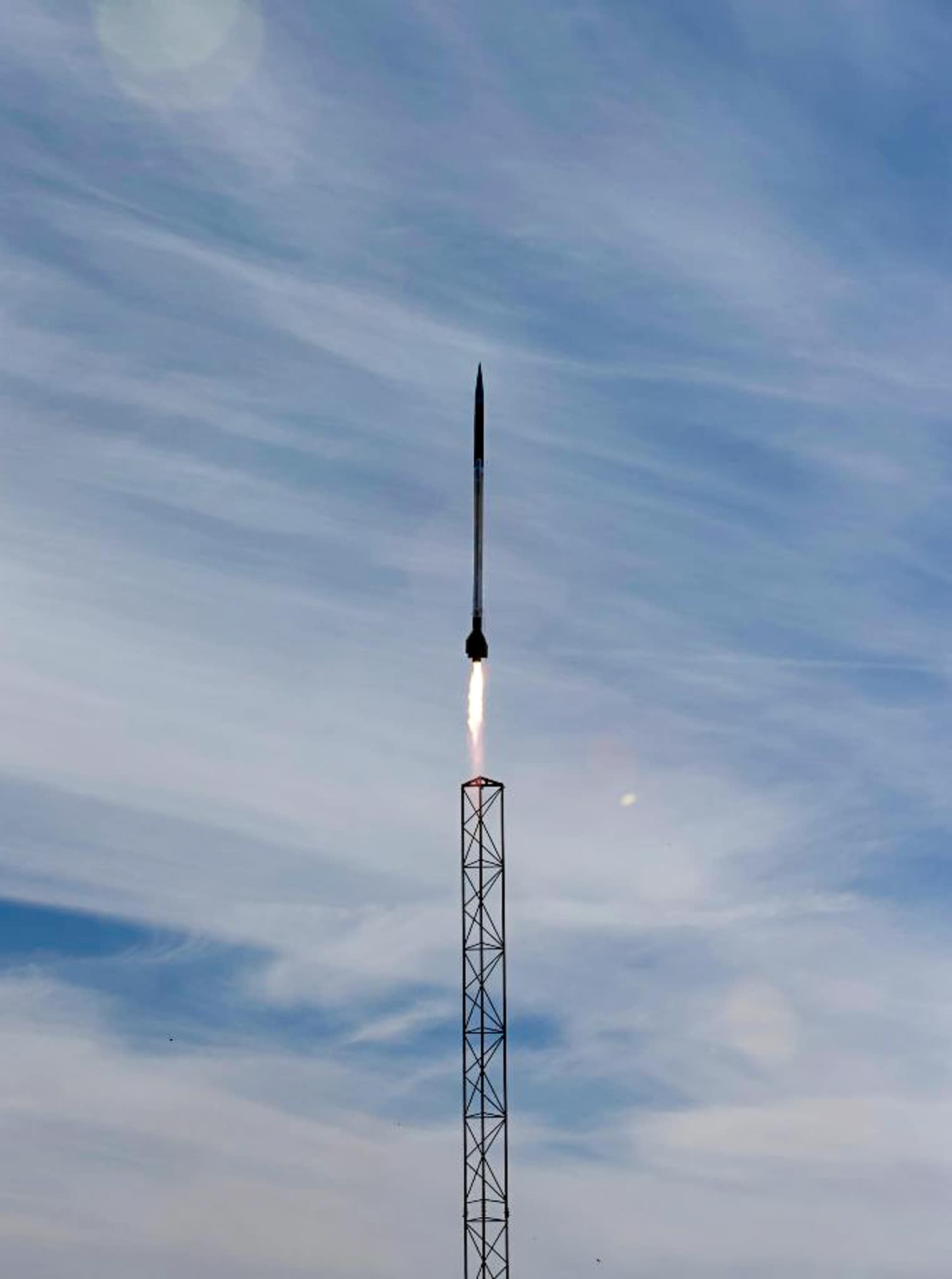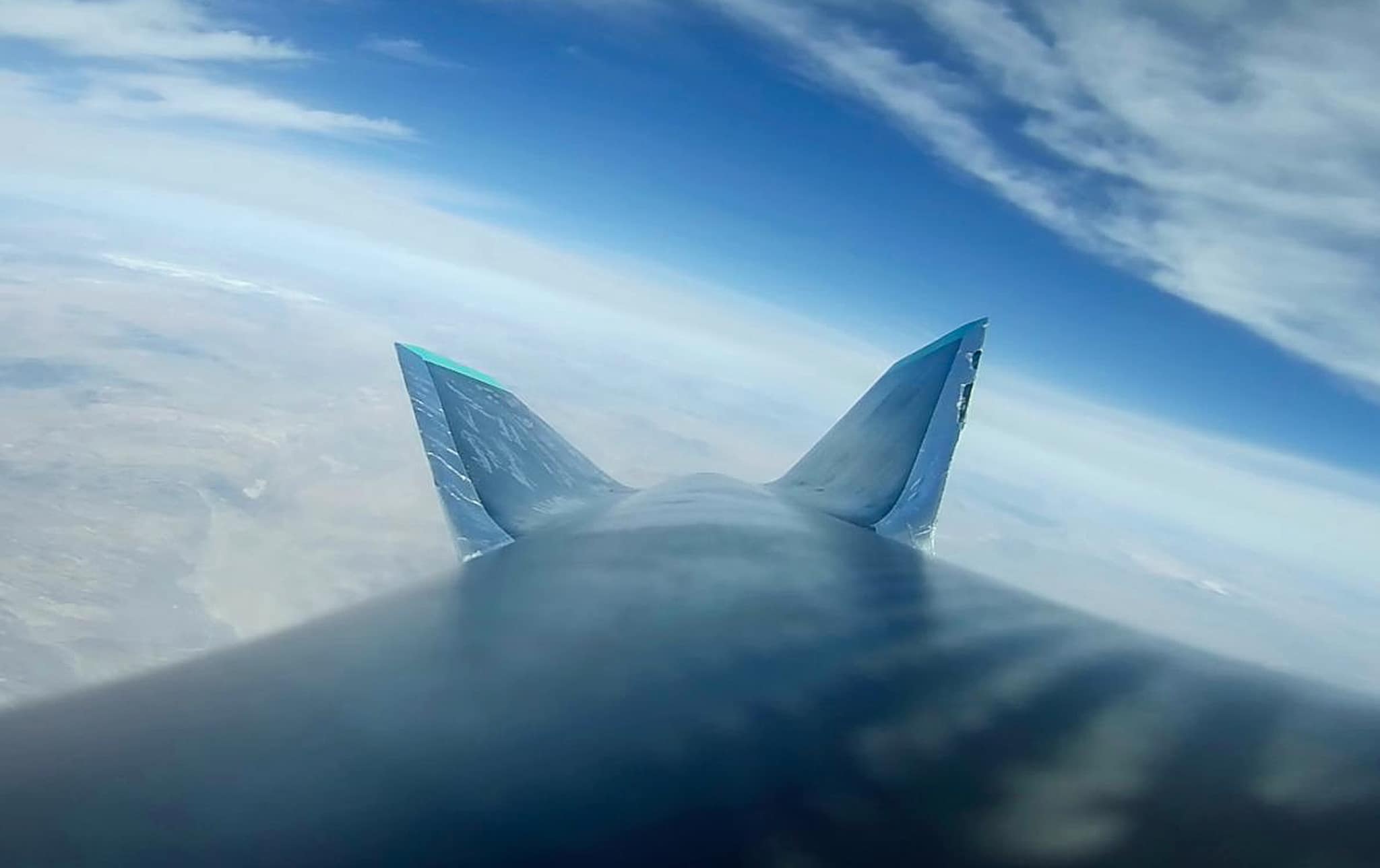‘Blood, Sweat, and Tears’: Embry-Riddle Rocket Team Overcomes Setbacks to Launch Deneb-2
At a Mojave Desert launch site, twenty undergraduate Embry-Riddle Aeronautical University engineering students stood waiting to fire a liquid-fueled rocket — one that they had designed and built, then redesigned and rebuilt.

The team with their Deneb-2 rocket at the Mojave Desert launch site. (Photo: Embry-Riddle/RDL)
The team, led by Olivia Wood, a senior Mechanical Engineering student on the Propulsion track, began the countdown.
Their goal was ambitious. After thousands of hours of work, the team wanted to not only break but shatter the previous collegiate amateur liquid-fueled rocket altitude record. In 2023, an Embry-Riddle team set the record of 47,732 feet with Deneb-1.
This time, the students representing the Rocket Development Lab (RDL) on the Prescott Campus aimed to reach a max altitude of 100,000 feet with Deneb-2.
“The feeling just before button push is the scariest thing in the world,” Wood said.
Up in Flames
The team’s journey to the Mojave Desert had not gone according to plan. Just a few months before the launch date, their dream appeared to go up in flames. During a routine test fire of the rocket on November 23, a catastrophic engine failure resulted in an explosion.

The Deneb-2 rocket takes off. (Photo: Embry-Riddle/RDL)
“At Embry-Riddle, we have a robust safety culture at our rocket test complex,” explained Dr. Neil Sullivan, assistant professor of Mechanical Engineering and faculty mentor for the team. “Whether it’s for club activities, labs, or any other student project, students are supported by rigorous training and certification for personnel, as well as extensive procedures for every activity performed at a test cell.”
Thanks to these protocols, the team was never at risk, and the incident was handled safely and efficiently. When the smoke cleared, however, they found that Deneb-2 had sustained significant damage, including to its engine.
The team scrambled to locate the cause of the explosion. But their instrumentation and detection methods offered no immediate diagnosis. Only after hours of analyzing video footage, frame-by-frame, did they determine the source of the failure: an undetected nitrogen leak.
"This caused a slow fuel valve, allowing oxygen to build up in the chamber and causing the detonation," explained Wood, who is graduating this spring and has already been hired by SpaceX as a launch operations engineer.
“Because of the explosion, we had to completely rebuild the pressure supply system,” added Miles Holt, Deneb-2’s test conductor and a Mechanical Engineering junior who will intern at SpaceX headquarters this summer.
With the March 16 launch window approaching, the team faced a critical decision: whether to rebuild.
“That detonation would’ve killed multiple teams,” Wood said. “But we picked ourselves up the next day, knowing that we needed a new engine and a new lower part of the rocket.”
They meticulously analyzed data from the explosion, identified failure points and redesigned the engine from the ground up. They reinforced structural components, refined their propulsion system and developed a more robust recovery mechanism.
“There was never any thought given to cutting their losses, lowering expectations, or quitting,” said Sullivan. “In rocketry, years of work can be destroyed in an instant. But these students were bound to this project by more than just intellectual curiosity.”
That bond paid off. Supported by faculty, university leadership and a network of alumni — as well as sponsorships from Blue Origin, Relativity, Collins Aerospace, SpaceX and others — the team rebuilt Deneb-2 almost from the ground up.

The Deneb-2 rocket nears its maximum altitude of 21,000 feet over the Mojave Desert. (Photo: Embry-Riddle/RDL)
Ready for Launch
Nearly four months after the test failure, the team was ready to launch on March 16. When the ignition sequence initiated, the team’s eyes locked onto Deneb-2. Holt pressed the button, and the team members held their breath.
The rocket roared to life, climbing into the desert sky and reaching a peak velocity of Mach 1.3.
“After all the blood, sweat and tears we put into this, when it goes up, that feeling is amazing,” Wood said. “The moment we see it fly, all the tears come out!”
But Deneb-2 failed to reach the record-setting 100,000-foot mark. When the rocket reached an altitude of 21,000 feet, it deployed its parachute at 380 mph horizontal velocity. Despite this, Deneb-2 was still recoverable.
As they had done before, the students reviewed available data to learn what had caused the rocket to fall short of their expectations. Ultimately, much of the reason why Deneb-2 did not reach its target altitude was likely due to an unforeseen anomaly that caused the rocket to turn sideways mid-flight.
“The amount of thrust we expected was 1,400 [pounds of force],” explained Wood. “We believe we produced 1,100 [pounds of force] from our engine, which was part of what caused us to pitch over and not reach our projected altitude.”
Yet after everything the team went through to get to the Mojave Desert and launch successfully, the result was still something to be proud of, Holt said.
“We love rockets,” he said. “It’s not as though we went out and bought a rocket. We built, troubleshot, tested and rebuilt our own. Seeing it fly was crazy.”
While Deneb-2 may not have set a new altitude record, the team learned a valuable lesson in overcoming setbacks.
“The students have an emotional investment in the project because they consider this flight vehicle, in large part, to be their legacy at Embry-Riddle,” said Sullivan. “They feel very strongly about leaving our rocket program in a strong position when they graduate.”
Their journey mirrored the real-world challenges of aerospace engineering, where failures are inevitable and the path to success lies in finding solutions.
“If we hadn’t done it — or if we had given up — we wouldn’t be here,” said Wood. “One of the most rewarding things is the knowledge we’ve gotten from this experience.”

 Keaton S. Ziem
Keaton S. Ziem